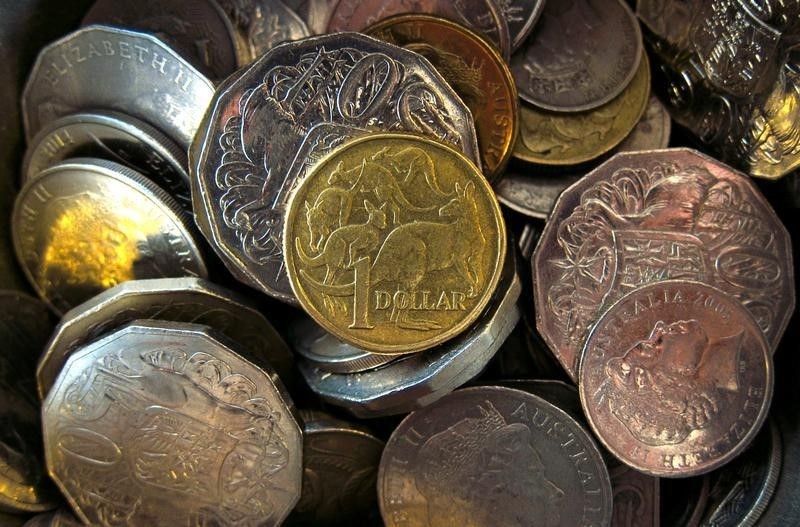By Cecile Lefort
SYDNEY, March 29 (Reuters) - The Australian dollar strengthened on Wednesday, coming off a two-week low hit in the previous session, as renewed optimism about the health of the global economy gave a boost to risk appetite and commodity prices.
The Australian dollar AUD=D4 rose to $0.7648, away from a trough of $0.7587 touched on Tuesday when markets doubted U.S. President Donald Trump could quickly implement his pro-growth plans.
"Risk appetite is resilient enough to avoid a meltdown," said Sean Callow, a senior strategist at Westpac, seeing the Aussie between 75 cents and 77 cents.
The Aussie remained within sight of a four-month peak of $0.7750 touched last week. Resistance was found around $0.7655 with support at around $0.7590.
Helping the Aussie was solid U.S. data backing expectations for more interest rate hikes this year and a bounce in some commodity prices on positive economic news from China.
Broad selling in the safe-haven yen underpinned the Aussie which powered up to 85 yen AUDJPY=R . It touched 83.76 yen on Tuesday, the lowest seen this year.
The Aussie received a fillip from sterling weakness GBPAUD= as the British government formally started its exit from the European Union.
Across the Tasman sea, the New Zealand dollar NZD=D4 edged lower to $0.7005, from a peak of $0.7048 touched on Tuesday. It met heavy resistance around $0.7020.
On the downside, a break under $0.6994 would open a test to $0.6975.
Like its Aussie cousin, it regained some ground against the yen at 77.86 yen NZDJPY=R , from a four-month low of 77.42 touched on Tuesday.
Bonds lost some of their shine on improving risk sentiment, with New Zealand government bonds 0#NZTSY= yields as much as four basis points higher at the long end of the curve.
Australian government bond futures also retreated from multi-week highs, with the three-year bond contract YTTc1 off 3 ticks at 98.030. The 10-year contract YTCc1 also eased 3 ticks to 97.2300, while the 20-year contract YXXc1 fell 3.5 ticks to 96.6850.
The difference between Australian and U.S. 2-year government yields AU2YT=RR dropped to 45 basis points, the lowest in a decade. (Editing by Subhranshu Sahu)
